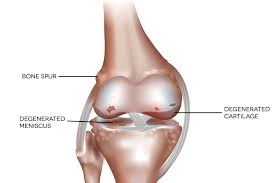Beijing, China — Researchers from Peking University have unveiled a groundbreaking 30-year study on neonatal infectious diseases in low- and middle-income countries (LMICs), shedding light on critical trends in disease incidence, mortality, and risk factors. Published in Health Data Science, the study spans the years 1990 to 2019, analyzing 15 common neonatal infections, including sepsis, enteric infections, and respiratory conditions.
Led by Ph.D. candidate Chenyuan Qin and Senior Research Fellow Jue Liu, the research team used data from the Global Burden of Disease 2019 to assess disease trends across 131 LMICs. The findings reveal significant disparities and highlight areas for targeted public health interventions to improve neonatal outcomes in these regions.
Key Findings
The study identified both progress and ongoing challenges in addressing neonatal infectious diseases:
- Mortality Declines, But Incidence Persists: While mortality rates for several diseases, such as tetanus and tuberculosis, declined significantly, the incidence of others, like neonatal sepsis and otitis media, showed slight increases across all regions.
- Disease Variation Across Regions: Enteric infections and upper respiratory infections (URIs) had the highest incidence rates in 2019, with lower-income countries experiencing more enteric infections, while upper-middle-income countries reported more URIs.
- Leading Causes of Death: Neonatal sepsis and lower respiratory infections (LRIs) remained the top contributors to neonatal mortality, with substantial regional differences.
The study also found that higher socio-demographic index (SDI) and universal health coverage index (UHCI) scores generally correlated with lower disease burdens. However, exceptions, such as the persistent burden of neonatal sepsis, suggest gaps in care and prevention.
Implications for Public Health
“Our study provides critical insights into the trends and disparities of neonatal infectious diseases in LMICs over the past three decades,” said Liu. “While progress has been made, we need to address the persistent and emerging challenges to reduce the incidence and mortality of neonatal infections effectively.”
The research underscores the urgent need for improved healthcare infrastructure, enhanced maternal and neonatal care, and targeted interventions to address specific diseases.
Future Directions
The team aims to delve deeper into the root causes of these trends and develop evidence-based strategies for public health policy and resource allocation. “Our ultimate goal is to guide public health policies that prioritize neonatal health and reduce inequalities in healthcare access,” said Qin.
This study offers a comprehensive roadmap for tackling neonatal infectious diseases in LMICs, with the potential to save millions of lives and improve health outcomes for vulnerable populations.
For more details, refer to the full study: Chenyuan Qin et al, Disease Burden and Geographic Inequalities in 15 Types of Neonatal Infectious Diseases in 131 Low- and Middle-Income Countries and Territories, Health Data Science (2024). DOI: 10.34133/hds.0186.












